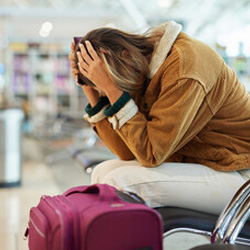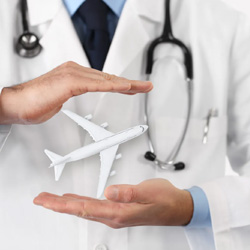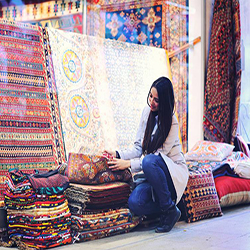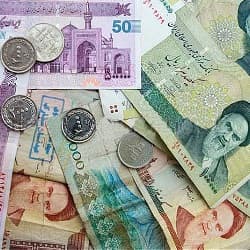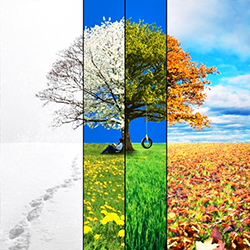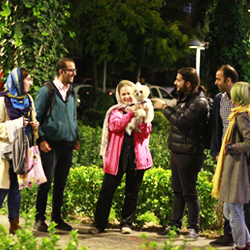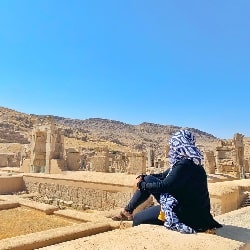Let us begin with one simple question: why Iran does not draw many tourists while:
- It’s ranked 11th in the UNESCO list of tangible cultural heritage?
- It has been selected as one of the 52 places to go in 2019 by the New York Times?
- It’s one of the cheapest countries to travel to?
- Iranian people are believed to be the most “welcoming” people in the world?
- According to the Travel Risk Map 2019, Iran’s regarded as one of the safest tourism destinations, as safe as some western countries like England or Switzerland?
- Getting a visa for Iran is as easy as winking, as it can be issued on arrival and there would be no stamp in your passport after you leave the country?
Let us tell you why!
In the first place, people see Iran as a dangerous country filled with restrictive rules. This is, indeed, the false image that the big media promotes about Iran. But, isn’t it time to forget about what the media says and travel to Iran?
This article is a complete guide to everything you need to know about Iran, including history, culture, attractions, visa, transportation, exact expenses, and the like.
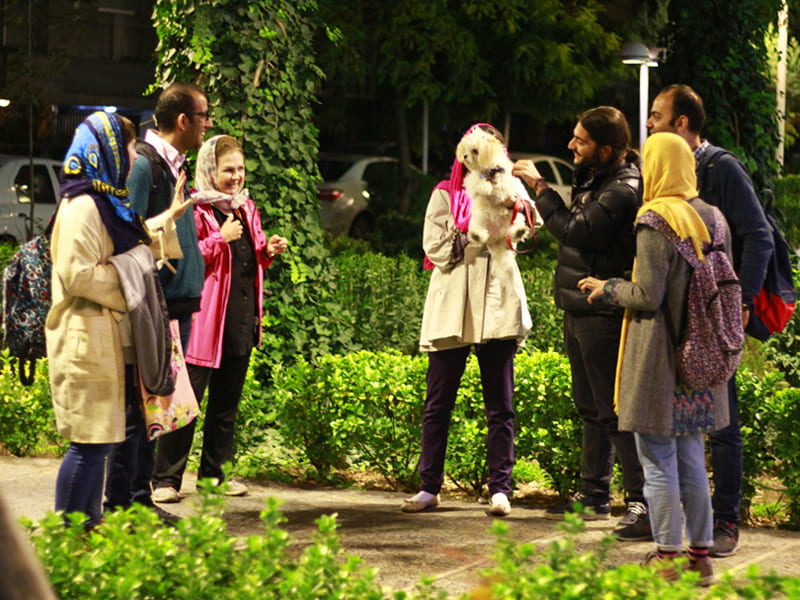
Perhaps “Iranian people” would be the first thing you will fall in love with when in the country.
Geography of Iran
With an area of 1,648,195 Km2, Iran is the 17th largest country in the world by land area. The country is located in southwest Asia, having borders with Armenia, Azerbaijan, and Turkmenistan in the northern part, Afghanistan, and Pakistan in the eastern part, and Iraq and Turkey in the western part. The Persian Gulf and Oman Sea are in the southern part. So, with these two water bodies, the country neighbors the UAE, Kuwait, Bahrain, Oman, Qatar, and Saudi Arabia.
One-third of Iran is mountainous. The main mountains are Alborz in the north, Zagros in the west, Central mountains, and the Northeastern mountains. The highest peak is mount Damavand with an elevation of 5671 m. Located in the northeast of Tehran, Damavand is one of the natural sites enticing many travelers and mountaineers when they visit Iran.
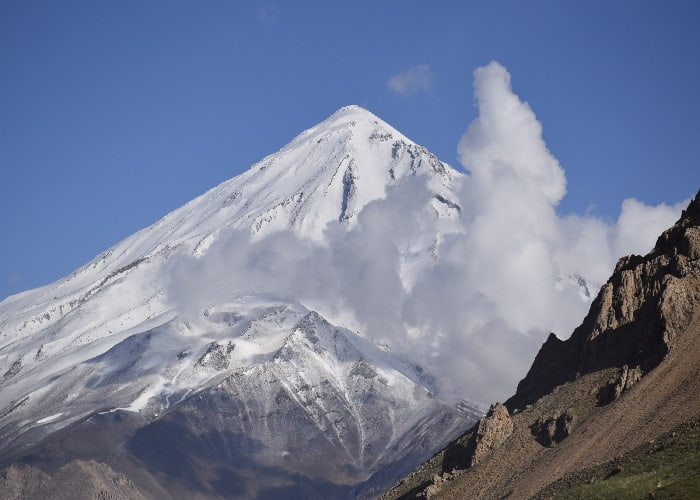
Damavand mount, the roof of Iran
A huge part of Iran is desert!
If you ever see a map of Iran, you’ve definitely noticed that a huge part of the country is desert. Iran has two main deserts: the Dasht-e Kavir and Lut Desert. However, there are other small deserts in the country, including Maranjab, Abouzeidabad, Mesr and Varzaneh deserts (in Isfahan), Ridge-Jen Desert (in Semnan), Yazd desert (in Yazd) and finally Shahdad desert (in Kerman).

Sunset in Varzaneh desert, Isfahan, Iran
How about other natural attractions of Iran?
Most people who’ve never been to Iran, think about the country as a desert with no other natural landscape. That’s because they haven’t got the chance to camp in the thick jungles of Gilan, Mazandaran, and Golestan. They’ve never heard of the unique lakes, waterfalls, and mountainous landscapes of Kurdistan, Lorestan, and Azerbaijan. And probably, they have no idea of what it would be like to see the sunset from the exceptional Persian Gulf beaches and islands!
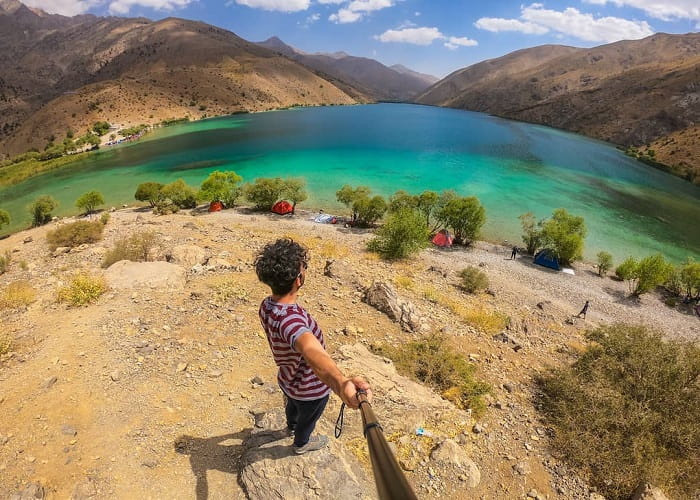
How about taking a selfie with the Gahar lake in Lorestan?
Iran history and culture
The history of Iran, ancient Iran or Great Persia, dates back to around 7000 BC. The country is home to one of the world’s oldest major civilizations.
In fact, the country hasn’t been a country with today borders, but a territory with areas starting from Egypt in the west to India in the east, and from the Caucasus in the north to the Persian Gulf in the south.
Iranian culture is inherited from the Great Persia. This culture is a combination of cultures of Aryans, Achaemenid Empire, Sassanid Era, and Safavid Era. So, when you’re heading to visit Iran, be ready to be welcomed with the diverse Iranian culture. In the section ‘Iranian festivals and traditions: the pure soul of Persia’, we’ll give you a deeper insight into the Iranian culture.
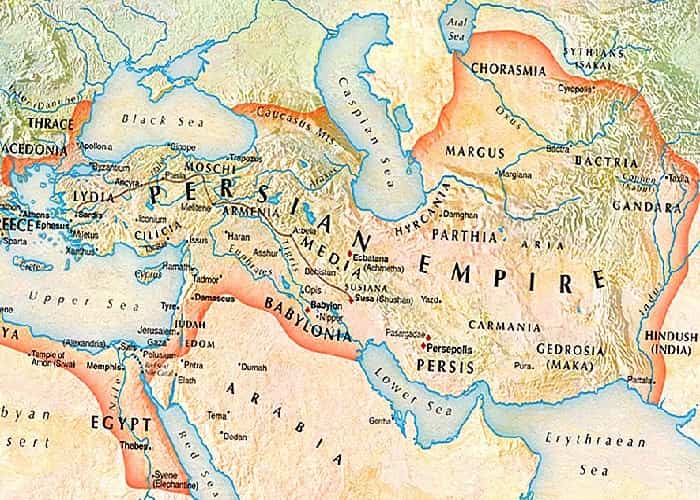
A map of ancient Persia
Different ethnic groups in Iran
With a great heritage and thousands of years of history, the country is the homeland of a number of ethnicities. People with different ethnicities, cultures, and dialects live in different corners of the region.
Persians are the dominant population distributed all over the country. In the northern part of the country, there are Gilakis, Tats, Talysh, Mazandaranis, and Turkmen. Turks, Kurds, Lurs, Baluches, and Qashqais are other ethnic groups living in the country, mostly residing in west or south of Iran.
Iran’s weather and climate
With the various altitudes in different regions, you’ll find different types of weather when you navigate your way through Iran.
The country is called a ‘four-season’ country for two reasons. Firstly, there are all four seasons in almost every corner of the country. Secondly, sometimes it is possible to go skiing in one part and go swimming in the other part on the same day. This is because Iran is so big and the weather condition varies in each part.
Iran has three main types of climate: desert, semi-desert, and mountainous climate. Sometimes, there is a difference of 50 degrees Celsius between the warmest and coldest parts of the country.
Read also: Weather in Iran – when is the best time to visit Iran?
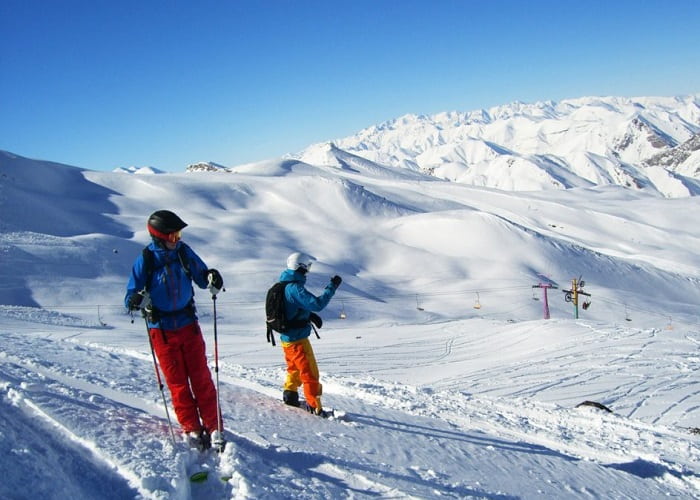
Skiing in the snowy mountains of Tehran… good idea? huh?
Iran’s top attractions and cities
Tehran: the modern face of Iran
If you plan to visit Iran, setting your sights on Tehran is a must. Tehran gives you a blend of glorious culture, magnificent history and modern life of Iranians. Some of the attractions of the city are Azadi Tower, Milad Tower, Grand Bazaar, Golestan Palace, Sa’ad Abad Palace, and Niavaran Palace, Tehran’s Museum of Contemporary Arts, to name but a few. For a detailed guide on Tehran history, climate, attractions and the like, read our articles on Tehran and Tehran Tourist Attractions.
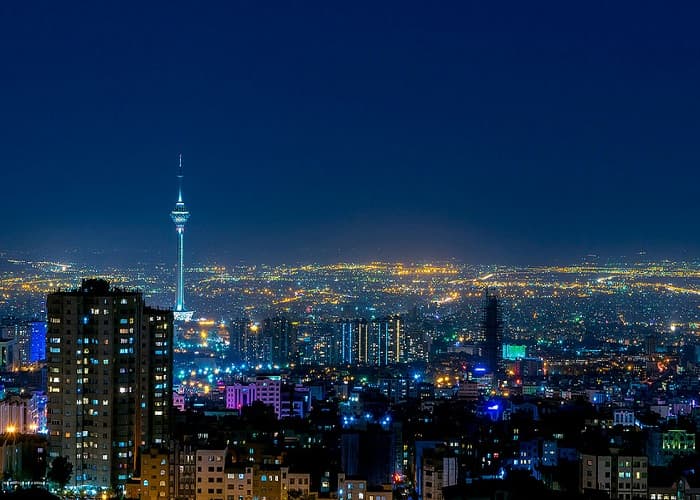
A view of Tehran captured at night!
Isfahan, ‘Half the World’
Isfahan is a city in central Iran located at a distance of 450 km from Tehran. The city is called ‘Half the World (Nesf-e Jahan in Persian)’ for its rich cultural and historical heritage built during the Safavid era. Isfahan boasts many unique attractions like Naqsh-e Jahan Square, Imam Mosque, Sheikh Lotfollah Mosque, Āli Qapu, Chehel Sotoun, Si-o-se Pol, Khaju Bridge, Manar Jonban, Atashgah, and Qaisarieh Bazaar as well as many other historical mosques, cathedrals, bazaars and museums which would take a tourist several days to visit all.
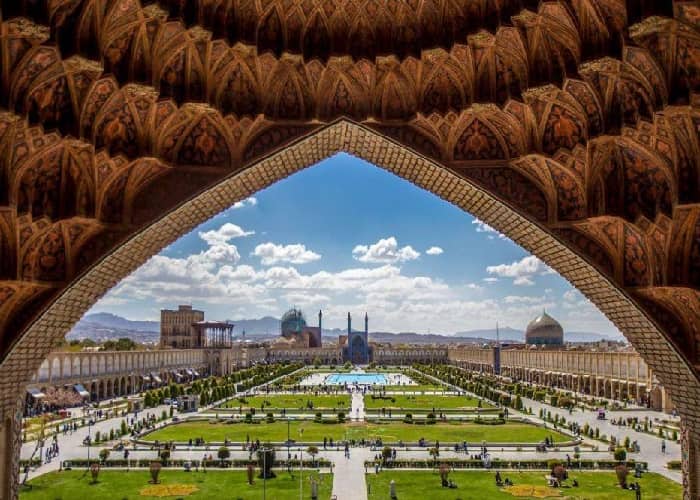
Naghsh-e Jahan square: a place to see the historical face of Isfahan.
Shiraz: the city of ‘fun and fancy’
If you’re ready to take a deep breath in the spiritual atmosphere of a ‘fun and fancy’ city, Shiraz would be the very thing.
Seated in the southern part of the country, this city embraces many historical and cultural attractions remained from ancient times. These include Pasargadae, Persepolis, Firuzabad Ensemble, Qavam House, Nasir-ol-molk Mosque, Tomb of Saadi and Tomb of Hafez.
As the city has been home to Iran’s most famous poets (Hafez and Saadi) who’ve been cherishing love and intellectual concepts in their poems, the city is considered a “romantic” city. Plus, people in Shiraz are not as conservative as other Persian people, spending their time hanging out in the parks or recreational areas.
For a detailed guide on Shiraz history, climate, attractions and more, read our article on Shiraz travel guide.
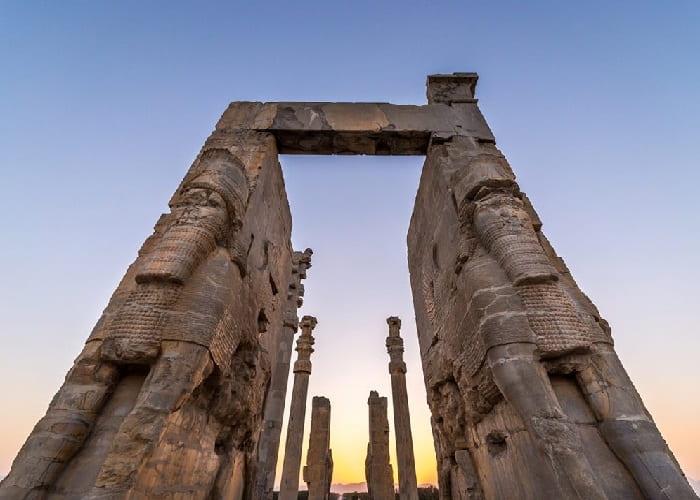
Persepolis in Shiraz: the earliest remains of Persepolis date back to 515 BCE.
Tabriz: a must-see city in the northwest
Situated in 619 km northwest of Tehran, Tabriz is the largest city of Iran’s Azerbaijan. The city is home to many historical monuments and tourist attractions remained from Ilkhanid, Safavid and Qajar dynasties. Blue Mosque, Kaboud Mosque, Bazaar of Tabriz, Ark-e-Alishah, Tabriz Art Museum, and Babak Castle are among the travelers’ top picks during their trip to Tabriz.

Babak Castle, Kaleybar, Tabriz
Mashhad: the religious heart of Iran
Being the second largest city in the country, Mashhad is one of the most visited cities by travelers. With Imam Reza Holy Shrine, the city is seen as the religious hub of Iran. However, you’ll be amazed by many more attractions like Tomb of Ferdowsi (the greatest Persian poet), Bazeh-Hoor Fire Temple, Naderi Garden-Museum Complex and the like. For a detailed guide on Mashhad history, climate, attractions and more, read our article on Mashhad.

Imam Reza Holy Shrine in Mashhad
Yazd: a World Heritage city
In the central deserts of Iran, a World Heritage city, Yazd, awaits you. This antique city is home to exceptional architecture not seen anywhere else in the world. A magnificent feature of the architecture of Yazd is wind cathchers. These constructions are built to help people get through long hot summer days. The old Zoroastrian houses of Yazd are also one of the unique features of the architechture, leaving many travelers speechless after a visit.

Yazd, a world heritage city!
Qeshm: the wonder island
Qeshm is the largest island in Iran, stunning you with its fascinating landscapes. With Stars Valley, Chahkouh Valley, Portuguese Castle, Hara Forest, Hormuz Island, and its marvelous beaches, a visit to Qeshm will be engraved in your memory for good.

Camels having fun in Qeshm Island!
UNESCO’s World Heritage Sites of Iran
According to UNESCO, a world heritage site is a place, building, city, complex, desert, forest, island, lake, monument or mountain that have special cultural or historical significance. Since 1979, 24 properties of Iran have been listed in UNESCO world heritage sites, including 22 cultural and two natural sites.
Cultural and Natural World Heritage Sites of Iran by 2019
As of 2019, the world heritage sites of Iran are:
Armenian Monastic Ensembles of Iran (in West Azerbaijan and East Azerbaijan provinces), Bam and its Cultural Landscape (in Kerman province), Bisotun (in Kermanshah province), Cultural Landscape of Maymand (a village in Kerman province), Golestan Palace (in Tehran), Gonbad-e Qābus (in Golestan province), Historic City of Yazd, Masjid-e Jāmé of Isfahan, Naghsh-e Jahan Square (in Isfahan), Pasargadae, Persepolis and Sassanid Archaeological Landscape of Fars Region, Shahr-i Sokhta (in Sistan and Baluchistan province), Sheikh Safi al-din Khānegāh and Shrine Ensemble in Ardabil, Shushtar Historical Hydraulic System (in Khuzestan province), Soltaniyeh (in Zanjan province), Susa (in Khuzestan province), Tabriz Historic Bazaar Complex (in East Azerbaijan province), Takht-e Soleyman (in West Azerbaijan province), Tchogha Zanbil (Khuzestan province), The Persian Garden, The Persian Qanat, Hyrcanian Forests, and Lut Desert.
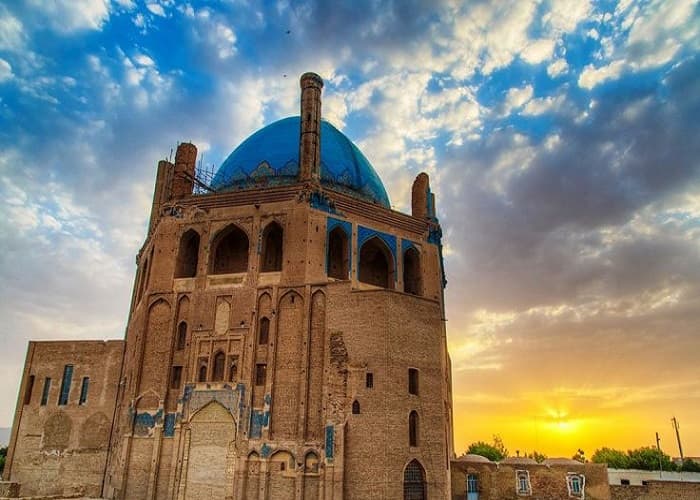
Soltaniye, the world’s largest brick dome!
Iran visa
Before you travel to Iran, you need to check if you need a visa for visiting Iran. Citizens of all countries except Turkey, Armenia, Syria, Georgia, Azerbaijan, Bolivia, Lebanon, Serbia, Egypt, Malaysia, and Venezuela need to get a visa to travel to Iran.
The service fee is around 65 USD for citizens of all countries except British and Canadian citizens for whom it is 175 USD.
Travellers can simply get their visa online or at the airport upon their arrival. Further to visa, you’ll need to submit a confirmed hotel reservation for the first night of your stay when you enter the country.
Note: According to new policies of the government, there would not be any stamp on traveler’s passport when they enter or leave the country so that they do not face any problems travelling around the world!
For detailed information on visa conditions, read also: how to get a visa for Iran.
Iran safety: Is it safe to travel to Iran?
There’s always the question of safety when it comes to traveling to Iran. The creepy part lies behind the fact that this country is surrounded by unstable and terrorism-stricken countries like Iraq, Afghanistan, and Pakistan. People, sometimes, confuse ‘Iran’ with ‘Iraq’.
Iran has always been pictured as a dangerous country with hateful people who go out of their home and burn other countries’ flags. While this is not true at all.
Iranian people are the most welcoming people you’d ever meet in your life. The country is safe and secure, even if you travel alone across the whole country, take public transportation and taxis or hitchhike all the roads long. According to the Independent, “Iran is as safe as the UK when it comes to security, according to a new interactive map showing the risk level around the world.”
Moreover, travelers who visited Iran usually rank the country as one of the safest places they’ve visited.
Can I hitchhike in Iran?
The answer is Yes! Travelers are easily hitchhiking on the roads of Iran. No matter you are an Iranian citizen or a foreign visitor, local people treat you with utmost hospitality and give you a ride if they see you on the road. However, you need to be cautious about Iranian drivers as they may drive so fast!
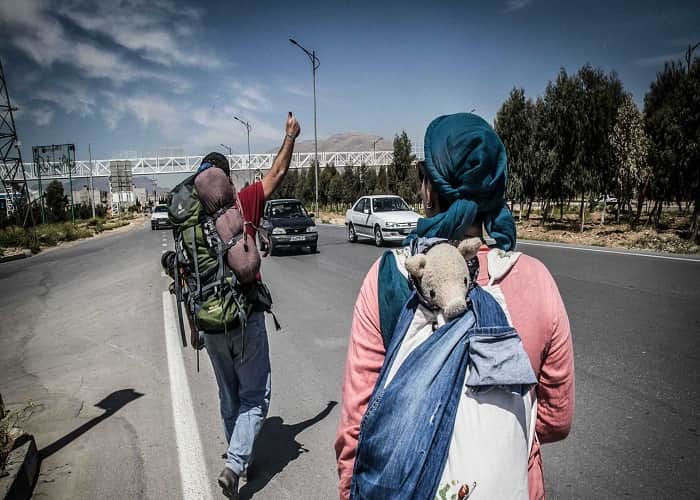
Hitchhiking in Iran would give you a better touch of Iranian life.
Cost of traveling to Iran
Iran is not only a fascinating diverse country to visit but also a cheap one. Considering the low exchange rate of the Iranian currency against the Dollar, you’ll be surprised at how cost-effective your trip really would be. To give you a better understanding of this, we are giving you the estimated costs of your trip. Regardless of your visa and flight costs, you’ll have the below costs when in the country (in Tehran):
Costs of food, water and the like:
8-20 USD for a meal in an upscale restaurant
2-8 USD for a meal in an ordinary restaurant
15 cents for a bottle of mineral water
2-4 USD for a cup of coffee/tea in a cafe
Costs of transportation:
Less than 1 USD, i.e. around 20 cents for a bus/metro ticket to get from one point to another in the city
60 cents – 6 USD for taking a taxi to get from one point to another (depending on the distance and type of the taxi)
3-20 USD for a bus/train ticket to get from one city to another (depending on the distance and type of the bus/train)
40-100 USD for a domestic flight ticket to get from one city to another
Note: To buy last-second domestic flight tickets in Iran, you can go and visit Tcharter.ir and Alibaba.ir.
Costs of hotel or hostel:
60-140 USD per night for a room in a luxury hotel
15-60 USD per night for a room in an ordinary hotel
5-25 USD per night for a room in a hostel
Note: The Couchsurfing website is also becoming more popular in the country. So, if you like to spend time with locals, finding an Iranian host on Couchsurfing would be a great idea.
Costs of tourist attractions’ entrances:
1-4 USD for entrance to each tourist attraction
Note: You won’t need to pay an entrance fee for visiting all tourist attractions. Only for places like palaces and museums, there would be such a fee.
Other costs (optional):
5 USD for buying a local SIM card
10-50 USD for buying Iranian handicrafts
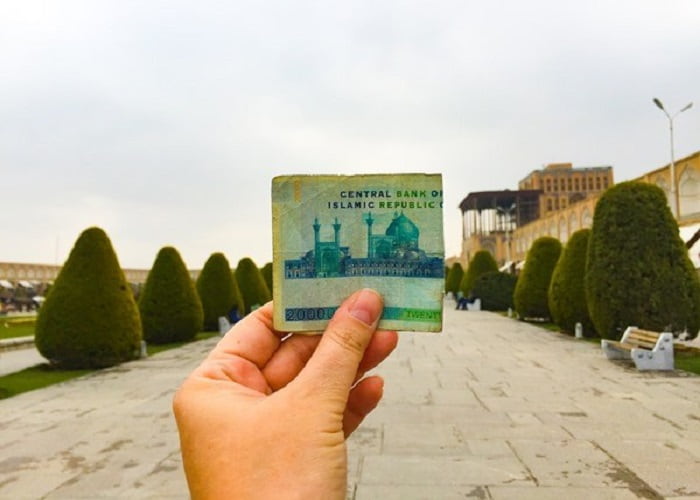
A cost-effective trip to Iran! Yay or nay?
Iranian foods: What to eat in Iran?
The Iranian cuisine is a blend of the Far East and the Middle East tastes featured with some Mediterranean ingredients. Typical Iranian dishes consist of rice, meat, vegetables, nuts, and certain spices. Plums, pomegranates, pistachios, and quince are often used in local foods in Iran. Green Herb Stew (Khoresht-e-Qormeh-Sabzi), Pomegranate and Walnut Stew (Fesenjan), Lamb Chickpea Stew (known as Dizi) and Persian noodle and bean soup (Ash-e Reshte) are among the most favorite Persian foods. For more information on this subject, please read our article on Iranian foods.
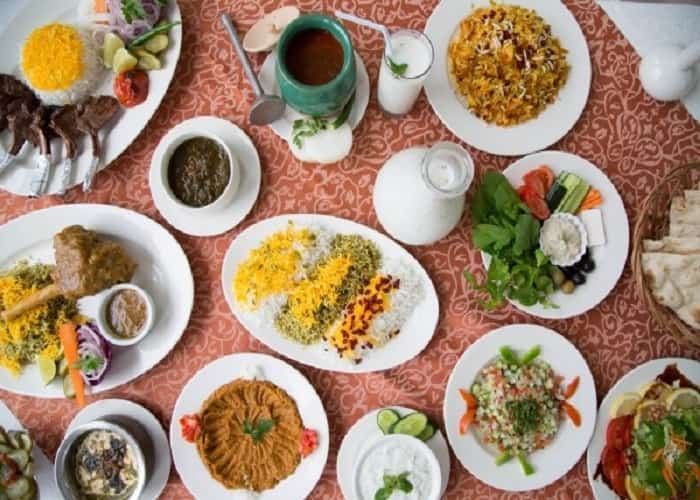
A table of colorful Iranian foods!
Iranian festivals and traditions: the pure soul of Persia
If you’re looking to dig into the Iranian society and culture, this section is for you. As outlined earlier, Iranian culture is one of the oldest in the world. There are a number of Iranian festivals and traditions reflecting the pure soul of Persia. Some of these custums include:
-
Nowruz
The word ‘Nowruz’ consists of the two words ‘now’ meaning new and ‘ruz’ meaning ‘day’ in Persian. It refers to the beginning of a day and metaphorically a year. Nowruz is the Iranian new year, which is celebrated all over the country. It begins on the first day of the spring (the first day of the Iranian calendar year), around 21th of March. There’s a 12-day celebration of Nowruz as a sign of the 12 past months. During this time, Iranian families gather together, visit each other or travel around the country to enjoy the beauty of the spring.
There are many other traditions common in Nowruz. One is ‘Haft Sin’ (meaning seven ‘s’) which refers to the tradition of putting seven special items (apple, garlic, sumac, etc.) on a table or tablecloth. The items are used as a symbol of respecting nature. The names of all of these items in Persian begin with the letter ‘S’.
- Another tradition is ‘Sizdah Bedar’ (meaning to go out on 13) which is the celebration of the 13th day of Nowruz. On this day, Iranians spend their time with their families and relatives outside, somewhere in nature.
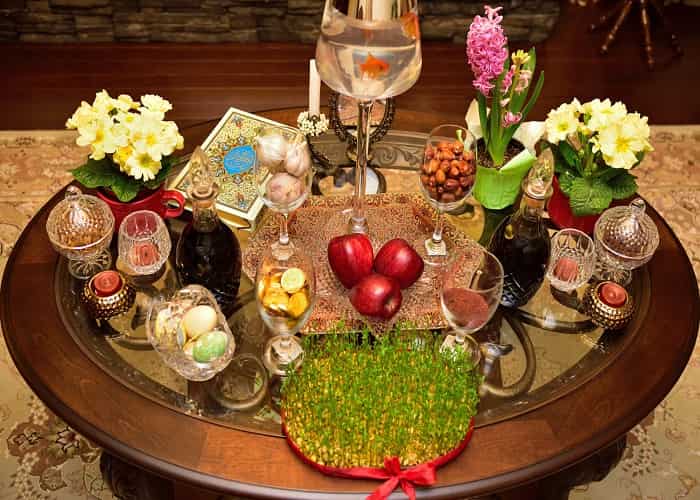
A Haft Sin table in Nowruz
-
Pir Shalyar
Pir Shalyar is a thousand-year ceremony held in the mountains of Kurdistan in the Hawraman Takht village on the 5th of February and 5th of May. The ceremony of February is called Pir Shalyar Wedding and the second one is named Komsai. Embraced with Kurdish dance, daf-playing, and astonishing rituals, this ceremony is a pure reflection of Kurdistan soul.
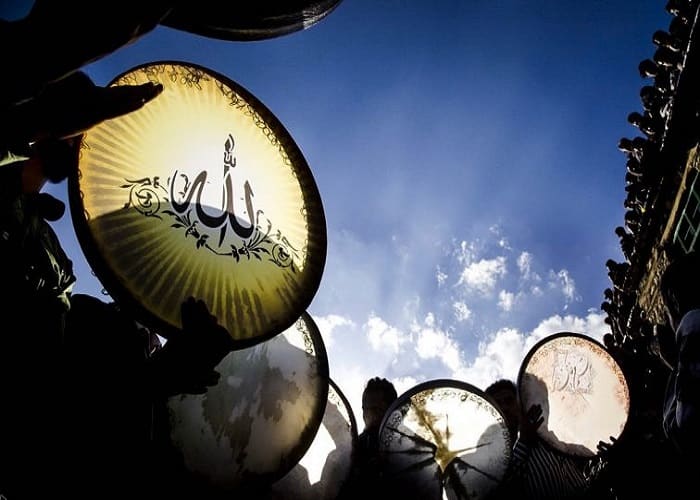
Playing daf is one of the special traditions in Pir Shalyar!
-
Mehregan
Mehregan is the Iranian festival of autumn. This festival is inherited from Zoroastrians. ‘Mehr’ in Mehregan refers to the first month of the autumn in the Iranian calendar. Ancient Iranians/farmers celebrated Mehregan (on the 1st of October) to show their respect to God for giving them food to survive the upcoming cold days. Today, Zoroastrians of Yazd and Kerman still celebrates this festival.
-
Golabgiri (festival of rose and rosewater)
Golabgiri refers to the ceremony of making rose water in different parts of Kashan (Qamsar, Niasar, etc.). This ceremony draws many tourists annually to Kashan as it is done in a specific traditional way. Rosewater (‘golab’ in the Persian language) is obtained from a kind of rose called Mohammadi Rose. The process starts with collecting the flowers from gardens and continues with heating them in huge copper pots. The rose vapor is then entered into cooler pots. And finally, rosewater or golab is made.
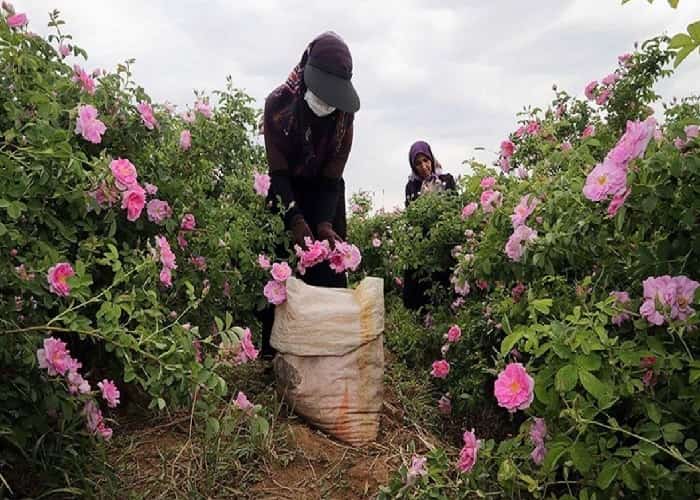
Golabgiri in Kashan!
-
Yalda Night
Yalda Night is the celebration of the longest night of the year and is the first night of the winter. People celebrate this night on the last evening of autumn (on the 20th of December). On this night, Iranians gather with their families and stay awake until midnight. They enjoy their time together and read poems of Hafez (a famous Iranian poet). Pomegranate and watermelon are the most common fruits for this night. This is because Iranians believe when they begin the winter by eating summer fruits, they won’t get sick during the cold.
What to wear in Iran?
One of the frequently asked questions of the tourists who decide to travel to Iran is how they should dress in the country. Despite what many people think of the dress cone of Iran, it is not as horrible as it seems.
Iranian women are to cover their hair and body according to the ‘Islamic dress code’. However, what the dress code might bring to your mind is probably very different from the reality you would see on the streets. When you walk in the city, you’ll notice young people with different types of clothes in a variety of colors and fashions.
Read our article: a guide to Iran’s Dress Code, to learn more about what to wear in Iran.
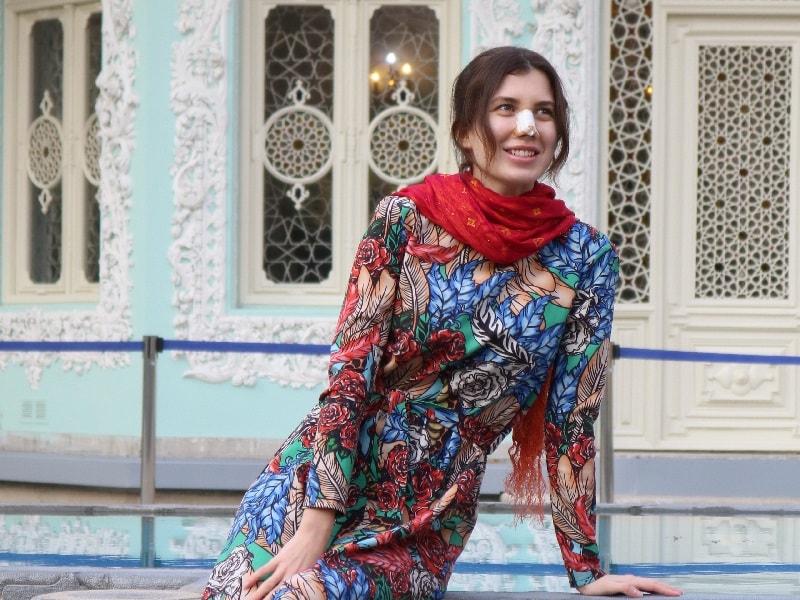
In Iran, you’ll see young people with different types of clothes in a variety of colors and fashions.
Working time in Iran
Business and working hours in the country may be a little bit complicated for foreigners. In Iran, a week starts on Saturdays and ends on Fridays. All banks, government offices and most businesses are open from Saturday to Wednesday and the first half of Thursdays. Friday is the weekend and government and business offices are closed. The following table shows the general business hours of different offices in Iran. For Thursdays, different banks have their own schedule.
| Business Type | Business Hours (Saturday-Wednesday) |
| Banks | 08:00-16:00 |
| Exchange Offices | 10:30 – 17:00 |
| Business Offices | 08:30-17:00 |
| Government Offices | 08:00-15.00 |
| Supermarkets, Stores and Shopping Centers | Flexible (typically from 8:00-23:00) |
Currency in Iran: Rial or Toman?
The official currency of Iran is Rial which is written as IRR. However, you may hear ‘Toman’ instead of Rial when asking for a price, which is equal to 10 Rials. Despite the common usage of Toman in public, prices of goods are written in Rials. For example, the label on a bottle of juice shows the price in Rial (e.g. 30000 Rials) even though the shopkeeper would say the price in Toman (3000 tomans), or even simply 3 tomans.
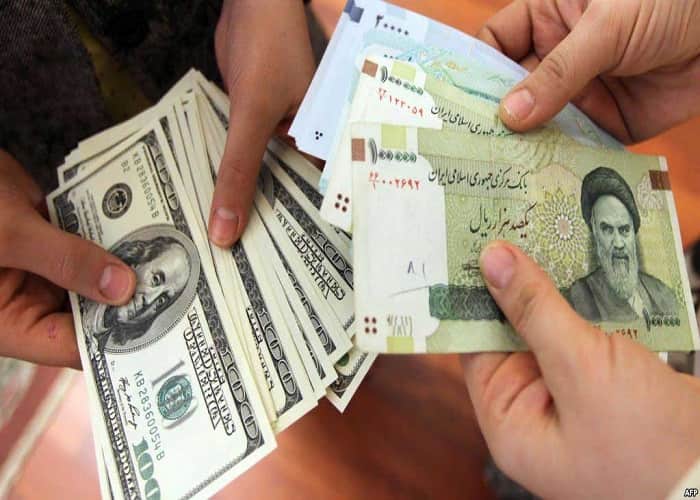
Rial or Toman?
International credit cards and money exchange in Iran
One of the main concerns of tourists traveling to Iran is whetehr they can use credit cards like Visa Card and Mastercard. Unfortunately, these credit cards do not work in Iran. So, you need to bring enough amount of cash with you to cover your costs when you travel to Iran. Otherwise, you’ll need to go to exchange offices in the main cities to get your money exchanged. In hotels and international airports like Imam Khomeini Airport, it’s possible to exchange your money as well. There is usually a currency ticker at these places displaying the exchange rates. Therefore, you can calculate the amount you should receive easily.
Communication, telephone, and internet in Iran
Telephone services in the country are really efficient and reliable. International calls can be made from public and private phones easily. Fax services and Wi-Fi Internet connection are available in all hotels, hostels, cafes, and restaurants. You can also buy a SIM card upon your arrival to have access to the internet wherever you are.
Three main mobile phone operators in Iran provide SIM card services. For more information about their services, you can check their websites (irancell.ir, mci.ir and rightel.ir).
Public Transportation in Iran
Availability and convenience of public transportation is a major concern for most individual travelers. Iran has a great variety of public transportation, from taxis to buses, trains and domestic flights. Here, we are going to briefly introduce these transportation systems (read section ‘Costs of traveling to Iran’ for transportation costs).
Metro
Tehran, Shiraz, Mashhad, Tabriz, and Isfahan have currently operational metro lines. The biggest subway system in the country is Tehran Metro. It has 7 operational lines. Metro is a very fast and convenient means of transportation in Iran and especially Tehran. It connects different parts of the city and is the best option to ditch the heavy traffic.
Bus
There are two different bus systems in major Iranian cities: Bus Rapid Transit (BRT) system and regular city buses. In Tehran, there are currently 10 operational BRT lines.
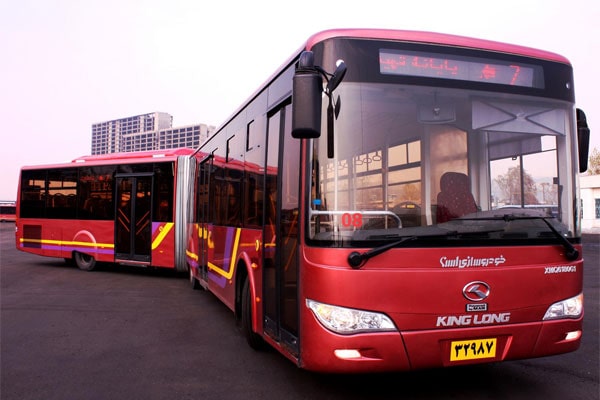
BRT in Tehran would help you leave the heavy traffic behind.
Taxi
There are lots of taxi stations in all the cities of Iran. So, you can easily get one at a taxi terminal or hail one on the street.
One Persian word that you need to know when using taxis is ‘darbast’. It literally means ‘closed door’, indicating that once you get in the car, the driver won’t pick another passenger, meaning it is exclusively for you. You can use it when you want to take a taxi for a couple of hours or a specific direction. It is better to negotiate the cost with the driver before you take the taxi.
Snapp and Tap30, Uber-like taxi applications
Snapp and Tap30 are two online taxi applications in Iran. They operate exactly in the same way as Uber. You can download them on AppStore or Google Play. They are usually cheaper than ‘darbast’ private taxis, and you can get one no matter where you are or when it is!

You have Uber in your country. We have Snapp and Tap30 in Iran.
Travel between cities by train
Iran has a large and useful railway network. The railway would be the best and safest option if you want to travel overnight, on a budget, or with friends and family and share a cabin.
Travel by domestic flights
If your schedule is tight and you don’t want to waste any time, domestic flights would be the best option. There are many airlines operating in Iran with scheduled domestic flights between cities on a daily basis. However, air travel is the most expensive type of travel in Iran (but probably not for a western traveler).












